Our Choice for the Best Korean-Japanese BBQ In Japan
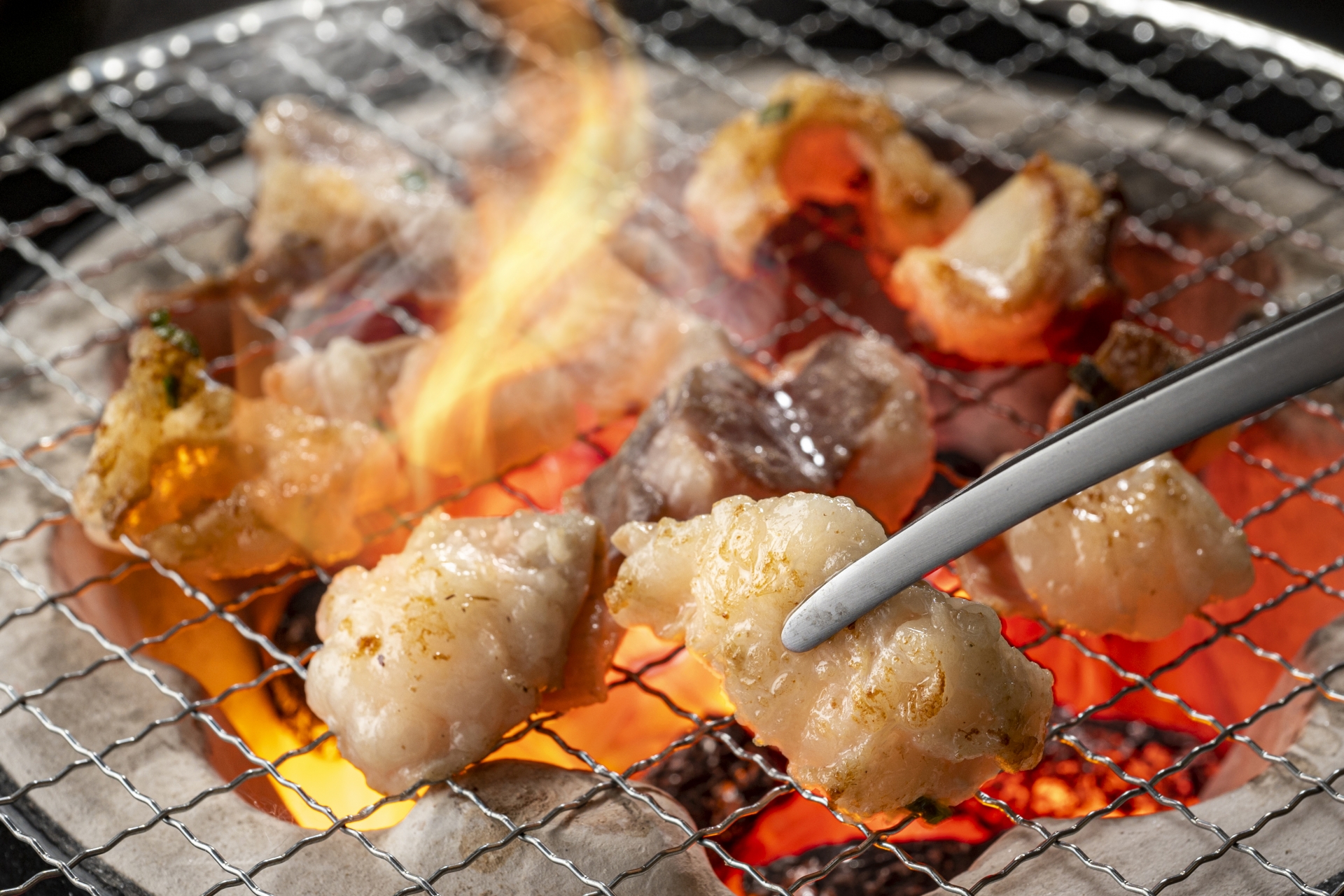
Yakiniku means grilled meat in Japanese, and Yakiniku restaurants can be found in every restaurant row in Japan. There are approximately 20,000 yakiniku restaurants in the country. Some specialize in premium brand-name beef such as Kobe and Matsusaka beef, while others specialize in offal and game meat. There are All-You-Can-Eat buffets, as well as conveyor belt yakiniku, just like conveyor belt sushi!
These days, the yakiniku trend keenly focuses on the dizzying variety of sauces. Many restaurants choose specific sauces depending on the particular type of meat that they serve. In addition, it is not unusual for customers to be served at least four or five different kinds of sauces. And there are so many different types! They vary widely from soy sauce & wasabi; to miso (Japanese classic fermented paste); to garlic, lemon & salt; to scallion & sesame oil seasoning with salt & pepper; to a Korean popular seasoning Gochujang; and so so many more! In addition, a variety of side dishes are essential with yakiniku, such as Sashimi meats & Sushi topped with raw meat; Tofu (bean curd), bean sprout and seaweed salads; beef bone soup; and cold noodles just to name a few. When looking at the side dishes, it is clear that many Japanese yakiniku restaurants like to feature Korean dishes on their menus. It is because Yakiniku was brought to Japan from Korea.
A Short History of Yakiniku: Before Japanese BBQ Became Yakiniku
There are many Japanese language books on the cultural history of yakiniku as well as numerous theories about how of yakiniku came about in the country. The most widely known theory is that yakiniku came to prominence after World War II which ended in 1945. While Japan was in the midst of a food shortage, Korean immigrants in Japan prepared and grilled internal organs of cows and pigs that the Japanese typically discarded. These Koreans immigrants were deft in using all parts of an animal in their delicious food offerings. They started to grill offal and game meat to be sold on the black market—these were illegal but accepted markets run by Japanese, Koreans, and Formosans (Taiwanese indigenous people). The black markets eventually became successful against the traditional market & distribution channels which sold their products at inflated prices during the postwar era.
In the past, offal BBQ shops were originally called Chōsen ryōri in Japan which means Joseon cuisine (Joseon was the last dynasty of Korea) or hormone shops (hormone literally translates to discarded pieces). However, when the Korean Peninsula was divided along the 38th Parallel in 1945 creating what we know today as North and South Korea, the term Chōsen ryōri restaurants began to change over time to Kankoku ryōri, which translates to South Korean cuisine restaurants in Japanese. This name changeover became more pronounced and accelerated when the Treaty on Basic Relations Between Japan and the Republic of Korea was signed in 1965. The treaty re-established diplomatic relations between Japan and South Korea. Thus, the term Chōsen ryōri gradually changed to the point where the term no longer existed. Thus, all of these types of restaurants were all eventually called Kankoku ryōri.
There are many different theories on how BBQ restaurants came about in Japan. In some Japanese BBQ books, Korean immigrants may have brought in the original form of yakiniku to Osaka back in the 1930s, introducing Korean style marinated short ribs and bulgogi grilled beef that were popular at the time in Seoul, the capital of Korea. The newspaper of the Tokyo Asahi Shimbun of March 25, 1933, introduced a recipe for Yakiniku and Offal under the title, The Joy of Korean Food, Eccentric Beef Dish. Another perspective is from the Korea Center, which has offices in Tokyo and Osaka, states that the current Korean-style BBQ was established in Korea after the Korean War that ended in 1953. People who lost their homes in the war had to build huts to protect themselves from the cold, wind, and rain. They ended up cooking on grills outdoors and then started to eat around those grills.
We can go on about other theories, but the point is that the origins of Yakiniku is certainly not definitive!
Although this is not an all-encompassing nationwide guide to Yakiniku in Japan, we are pleased to offer the below list of the best BBQ restaurants in the country, as per our members’ experiences.
Great BBQ Restaurants in Korean Towns All Over Japan
King of Offal BBQ in the Largest Korean Town in Japan – Sora, Osaka
Sora restaurant is located in the city of Tsuruhashi, which is known as the largest Korean neighborhood in Japan. We call Sora the “Capital of Offal” because it offers the widest variety of offal, with nearly 30 different types available daily. Different & rare offal varieties are difficult to find, so enjoy your dining experience at Sora because you may not be able to eat these offal selections anywhere else! All of the offal are carefully prepared so that the rich and authentic flavors shine through! Be sure to use the different types of sweet and spicy sauces which complement the taste of the offal so well. This restaurant is always popular. Thus, be aware that people line up even before it opens at 5:00 p.m. (Saturday and Sunday open at 4:00 p.m.). Reservations are available for groups more than three people.
Western Japan’s BBQ King – Shokudoen in Osaka & Nara at Various Locations
Japanese BBQ lovers consider Shokudoen as the No.1 Yakiniku restaurant in Western Japan. The place obtained a patent for its groundbreaking Hana-ami meat cutting technique in the Japanese BBQ industry. The must-order dish there is the Hana-ami Short Rib where this special technique is employed. Note the unique artisanal mesh design, as pictured below. The pattern enhances the flavor of the short rib. Another specialty is the cold noodle dish named Reimen, which were popularly known as Pyongyang Reimen Noodles when they first established this restaurant. The noodles are made to order using the best quality soba buckwheat flour. The noodles go perfectly with their classic broth soup.
Hole-in-the-Wall BBQ – Nogiku Yakiniku, Kobe
You could easily pass by and miss Nogiku if you didn’t know the store existed. Even some of our members were lost when they were trying to find the place on their first trip there! On the Northside of Shinnagata Station, there is a block with many small Japanese-style pubs. Further down the block, you can see a little sign with an arrow that points to a narrow alley. Turn into that alley, and you will find the heavy old wooden door of Nogiku’s entrance.
A very popular restaurant loved by locals, Nogiku‘s meats are marinated in a delicious homemade sauce with four levels of spiciness to choose from. Besides meat BBQ offerings, an absolute must-order is Suji Tofu (crunchy meat-stuffed tofu) and Pinbinmen (sweet and spicy Korean-style noodle). As Nogiku is indeed a popular spot, it is highly recommended to book reservations in advance if you want to dine during peak hours and on weekends.
Eating Fresh Meat on a Charcoal Grill – Shinjuku-Horumon, Tokyo
Tokyo’s Korean town is Shin-Okubo district, which is located near Shinjuku. The area is chock-full of Korean restaurants as well as other interesting aspects of Korean culture. This is second largest K-town following that of Osaka. It is very difficult to determine which place is the very best BBQ place in this area, as it is one of the most competitive and diverse Korean restaurant scenes in Japan. However, our members absolutely love Shinjuku-Horumon! Their menu has over 50 varieties of beef & pork offal and other meats. Each meat offering is well seasoned with different sauces and/or spices. Must-Have menu items include the fresh raw meat sashimi such as Tan-sashi (beef tongue with a silky texture), Hatsu-sashi (beef heart possessing a soft texture), Shirasenmai-sashi (beef stomach with a crunchy bite), and Foie-liver (medium-rare liver which possesses the buttery sensation of foie gras). To complete the meal, enjoy some Japanese-style cold noodles with plum paste.
The First Korean Restaurant in Tokyo: Highly Acclaimed – Meigetsukan, Shinjuku Tokyo
Meigetsukan is the first authentic, high-class Korean restaurant in Tokyo, which opened in 1946. It offers a wide variety of Korean items, including BBQ dishes and seasonal dishes using traditional recipes. When Japanese people talk about Korean BBQ, the two oldest Korean restaurants in Japan are always in the conversation: Meigetsukan in Tokyo and Shokudoen, the oldest Korean restaurant in Osaka.
At Meigetsukan, beef ribs and loin are popular, but raw beef with raw egg dish called Yukke Sashimi, and a hot spicy soup of beef & vegetables called Yukkejang, are also well worth trying. The Korean cold dish using homemade thin noodles and served in a beautiful clear broth is delightful. A hot noodle dish named Onmen, using beef broth together with a special soy sauce, is comforting and addictive. The noodles are also available during lunch time, because many people come to the restaurant just to have this!
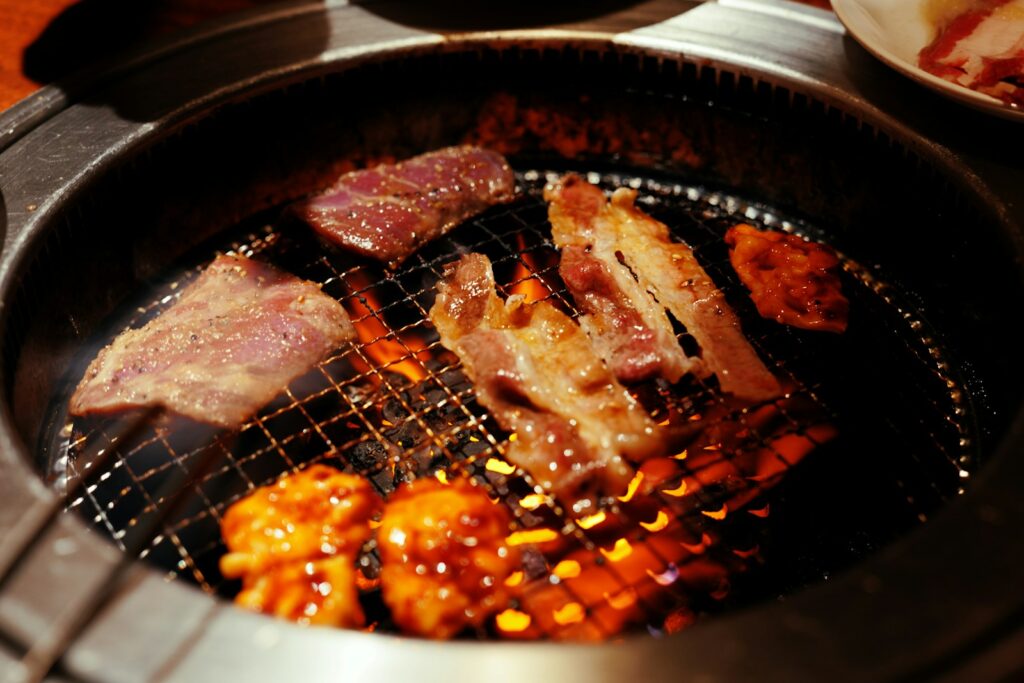
Beloved and Serious K-BBQ in Little Busan – Yasumori, Shimonoseki City, Yamaguchi Prefecture
Shimonoseki city is known as Little Busan (the 2nd largest seaport city in Korea) because of its geographical position to Busan. Koreans came to Shimonoseki and over time, a large Korean community was formed and grew there. If you look at a map, Shimonoseki and Busan are not geographically very far from each other. The Kanpu Ferry has operated between them for over fifty years which encouraged travel to and from both cities for weekend and day trips.
Yakiniku Yasumori is an authentic Korean barbecue restaurant established by first generation Korean residents in Japan. It is no overstatement to say that you can actually taste the half century old Korean-Japanese traditional flavors in its barbecue and in other flavorful dishes at Yasumori. Many customers have enjoyed Yasumori’s foods for more than three generations. They offer the highest quality Japanese Black Beef called Wagyu as well as various authentic Korean dishes. The menu is actually well-balanced for a healthy modern lifestyle. Yasumori is a welcoming establishment, bringing high quality meal offerings and top-notch hospitality.
Regional Cuisine, Offal Hot Pot – Tonchan Nabe, Shimonoseki Yamaguchi Prefecture
Tonchan Nabe is located in Little Busan, which is in the same town as Yasumori. The restaurant invented the unique Tonchan Pan (pictured below), which appears to be the current version of the early pan, essentially made from scrap metal which was literally pounded out to make a basic shallow-bottomed cooking vessel. The restaurant utilizes its Tonchan Pan to cook its most popular offal dish. It contains heaps of simple and fresh ingredients including offal, chili peppers, bean sprouts, and garlic. This offal dish is one of the most famous local dishes in the Shimonoseki region for more than half a century.
Outside of the Korean Towns, Other BBQ Restaurants in Tokyo
Table for One Yakiniku – Ohnishi, Ebisu
Ohnishi is a casual Osaka style counter-seat BBQ restaurant that is uniquely ideal for those who like to dine solo (see below picture). The restaurant serves carefully selected meats sourced directly from the market every day. From behind the counter, the staff keeps a close eye on your personal grill, inspecting the progress of your BBQ. The restaurant is open from 11 am to 5 am! If you want to dine at a comfortable pace, the best time to visit is from 5 pm to 7 pm. We recommend their limited-quantity menu which contains special hard-to find meats such as the finest thick-cut skirt steak called Harami. It is typically served with the citrus-based sauce Ponzu and/or a spicy soy sauce, along with a side of wasabi garlic chips.
For the Perfect Date Night Dinner, Order the High-End Wagyu Beef BBQ – Jojoen, Various Locations
Over nearly four decades, Jojoen is well-known for originating Japan’s fine dining yakiniku experience. They have expanded over the years and now have various locations in Japan. The menu features an incredible selection of Japan’s famed Wagyu beef and other sumptuous ingredients. They also offer superb interiors and the very best smokeless BBQ grills for your complete comfort. Negi-Yakiniku is a way to enjoy beef with Jojoen’s special shredded scallion folded in the meat. This style is a Jojoen innovation. The scallion is steam roasted in the meat while it’s grilled. Today every yakiniku restaurant in Japan has this on its menu as a standard dish. The owner of Jojoen also trained at Meigetsukan, the oldest Korean restaurant in Tokyo.
Eat and Drink with the Locals, Like Anthony Bourdain – Sutaminaen, Adachi
If you are a fan of Anthony Bourdain, or want to travel and eat like Tony, you absolutely must visit this place. The restaurant is located in a remote area in Tokyo, but many people come from far away to dine here. Thus Sutaminaen does become crowded, even on weekdays. The most popular dish is the mixed offal simply seasoned with salt. You can enjoy the various textures in each of the offal types. Another good choice is the achilles tendon, which is soft and tender, served with vinegar miso. This collagen-rich dish is good for your skin, making you look years younger.
The beef tongue called Jyo-tan Shio is one of the signature dishes that they are proud of. It has a tender and juicy taste that cannot be found elsewhere. This costs about $10 more than the regular tongue, but you certainly won’t regret ordering it. Finally, a Korean Oxtail soup, Gomtang with rice, is a very popular dish at Sutaminaen. The restaurant also offers a wide range of alcoholic beverages, including beer, soju, sake, Korean rice wine Makgeolli, and Chinese rice wine, Shaoxing wine. Although it is a bit far from central Tokyo, and the prices are high, it’s definitely worth going and dining there. Sutaminaen is closed on Tuesdays and the second and third Wednesdays of the month.
Mindful Eating, Bringing Tradition and Innovation Together – Yakiniku Jumbo, Various locations
Yakiniku Jumbo specializes in A5-ranked Japanese Black Beef. A5 is the highest grade given only to the finest beef, and black cattle is the most popular breed of Japanese beef. The meat is very fresh and shiny that it actually can be eaten raw. You only need to cook it for a few seconds in order to eat this meat medium-rare. It is a great place for Mindful Eating, using all of your senses. Listen to the meat being grilled; see the smoke that rises softly; smell the slow-cooked smoky scented meat; and feel this succulent meat melt in your mouth… it’s so delicious! A must-order dish is Noharayaki, which is lightly seared meat seasoned with house-made sauce and served with Kyoto’s specialty raw egg, similar to sukiyaki meat. Other specialties are the Hormone Chawanmushi which is sliced beef tendon offal in steamed egg custard; Chateaubriand, a French dish favorite, with large cuts of beef tenderloin and; Ushi-Gohan, which is a beef rice bowl dish with the most tender fillet meat and consommé broth.
Offals & Shōchū Bar – Wa, Kichijoji City, Tokyo
If you are in Kichijoji City, visit the Ghibli Museum, a famous Japanese animation studio museum, and afterwards, you must stop by to dine at Wa! Wa is a great casual yakiniku restaurant with a wide selection of Shochu, which is a traditional Japanese liquor commonly referred to as Japanese vodka. It is stronger than Japanese Sake and is typically made from potatoes, wheat, or rice. The signature dish at Wa is the classic style offal from Ikuno, Osaka, the owner’s hometown. The best way to enjoy the fresh offal is to flavor it with just a pinch of salt and spice. Be sure to pair your dish with some shochu or Japanese whiskey. The members loved a popular dish called the Hatsu Sashimi. This sashimi was delightfully flavored with sesame oil and scallions, making it a very tasty dish. The Harami-don was also excellent which is a bowl of rice topped with raw egg, thick slices of skirt steak, and a layer of rice underneath. All of the dishes are hearty yet reasonably priced which is made possible by the fact that Kichijoji is a bit far from the Tokyo city center.
Hidden Gems, The King of Offal in deep into Shibuya – Yuji -Shibuya
Shibuya is one of the most popular areas of Tokyo, known for its shopping, dining, and drinking. Beyond the famous Shibuya scramble crossing and further into the neighborhood, you will find Yuji, a well-known offal BBQ restaurant in Shibuya. The tiny, two-story restaurant is always crowded, and it’s no surprise that there’s always a line outside. It possesses an izakaya-like atmosphere—a type of informal Japanese bar that serves alcoholic drinks and food. Here you can enjoy raw meat Sashimi, BBQ ribs, tongue, liver, and vegetables at reasonable prices in a very casual setting. Both the table seats and the counter seats are spaced closely, so we recommend this place for people who want to enjoy BBQ in a small but lively atmosphere with locals. The service is fast-paced and very efficient, but the harried waiters can understandably lack some courtesy, so it would be better to go with someone who speaks Japanese for a smoother experience. Only cash is accepted.
A Famous Kimchi Village by Korean Brides -Tozawa village, Yamagata Prefecture
Before we end our discussion about yakiniku and Korean restaurants, we would briefly like to mention Tozawa Village in Yamagata and a story behind Tozawa-Kimchi. In the 1980’s, Tozawa Village recruited women from Korea to fill a shortage of potential brides. This recruitment program resulted in 10 Japanese men and Korean women eventually getting married. One of the Korean brides, in an attempt to assimilate better with the local Japanese community, came up with the idea to start a kimchi-making class for children and housewives. It was a great success as the classes grew and became well-established in the village. From these teachings, the locals eventually sold and branded the kimchi as Tozawa-Kimchi. Customers from all over the country now visit the village just to sample and purchase the Tozawa-Kimchi.
In 1997, the village built a roadside station called Tozawa Momokami no Sato Kouraikan. Inside this roadside station, there are stores which offer a variety of Korean products, food, and of course kimchi! The lone restaurant in the roadside station is named Seoul Bulgogi, and it’s certainly worth a visit. You can enjoy Yakiniku BBQ or kimchi-marinated pork set meals (both comes with rice and soup) there. If you like sweets, the ginseng plant ice cream with gold leaf is rich and very delicious. The crispy texture of the ginseng pieces is unique and tantalizing.

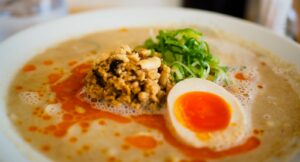

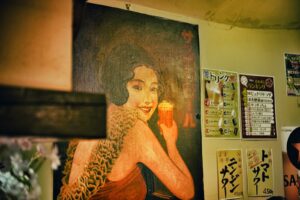

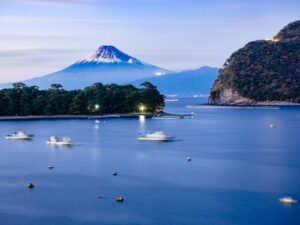

 Instagram
Instagram